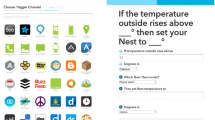Abstract
This paper describes the concept and the current state of development of "reactive spaces". How can one communicate with architectural spaces, through one’s movement or even one’s appearance? One goal of the project N ‘Files – A Space To React is it to develop a system which supports the interaction between spatial areas and its users. A space, which is changing with and through the user....which reacts to the user’s input. The basis for such experiments was laid in research fields such as Ambient Intelligence (AmI), Ubiquitous Computing or Hybrid Environments. If take these new communication and interaction possibilities some steps further, then it becomes clear that our traditional sense of space will be transformed radically by them.
Preview
Unable to display preview. Download preview PDF.
Similar content being viewed by others
References
Edler & Edler: Digitale Transformationen, Fleischmann – Reinhard – Praxis Reaktorbau, S. 216 (2004)
Weibel, P.: Viable und virtuelle Architektur. In: Möller, C. (ed.) Interaktive Architektur, pp. S. 3–5 (1994)
Maeda, J.: Simplicity – the art of complexity. In: Preface Ars Electronica 2006 (2006)
Schnur, O., Kwastek: Mobile Spaces of Interaction. Strauss-Fleischmann-Zobel, pp. S. 102–124 (2004)
Ngo, A.-L.: arch plus175, Zeitschrift für Architektur und Städtebau, Das Immersionsprinzip, p. S.14 (2005)
Author information
Authors and Affiliations
Editor information
Editors and Affiliations
Rights and permissions
Copyright information
© 2006 Springer-Verlag Berlin Heidelberg
About this paper
Cite this paper
Fröhlich, C., Kern, M. (2006). N’Files – A Space to React. Communication Between Architecture and Its Users. In: Zha, H., Pan, Z., Thwaites, H., Addison, A.C., Forte, M. (eds) Interactive Technologies and Sociotechnical Systems. VSMM 2006. Lecture Notes in Computer Science, vol 4270. Springer, Berlin, Heidelberg. https://doi.org/10.1007/11890881_7
Download citation
DOI: https://doi.org/10.1007/11890881_7
Publisher Name: Springer, Berlin, Heidelberg
Print ISBN: 978-3-540-46304-7
Online ISBN: 978-3-540-46305-4
eBook Packages: Computer ScienceComputer Science (R0)




